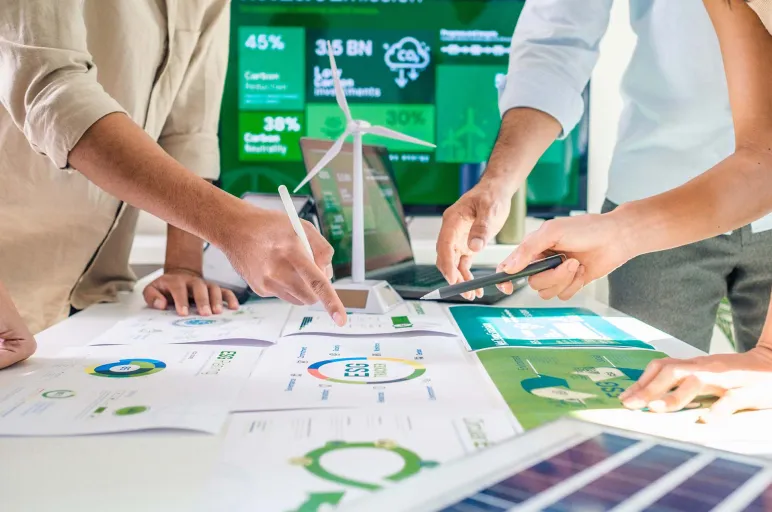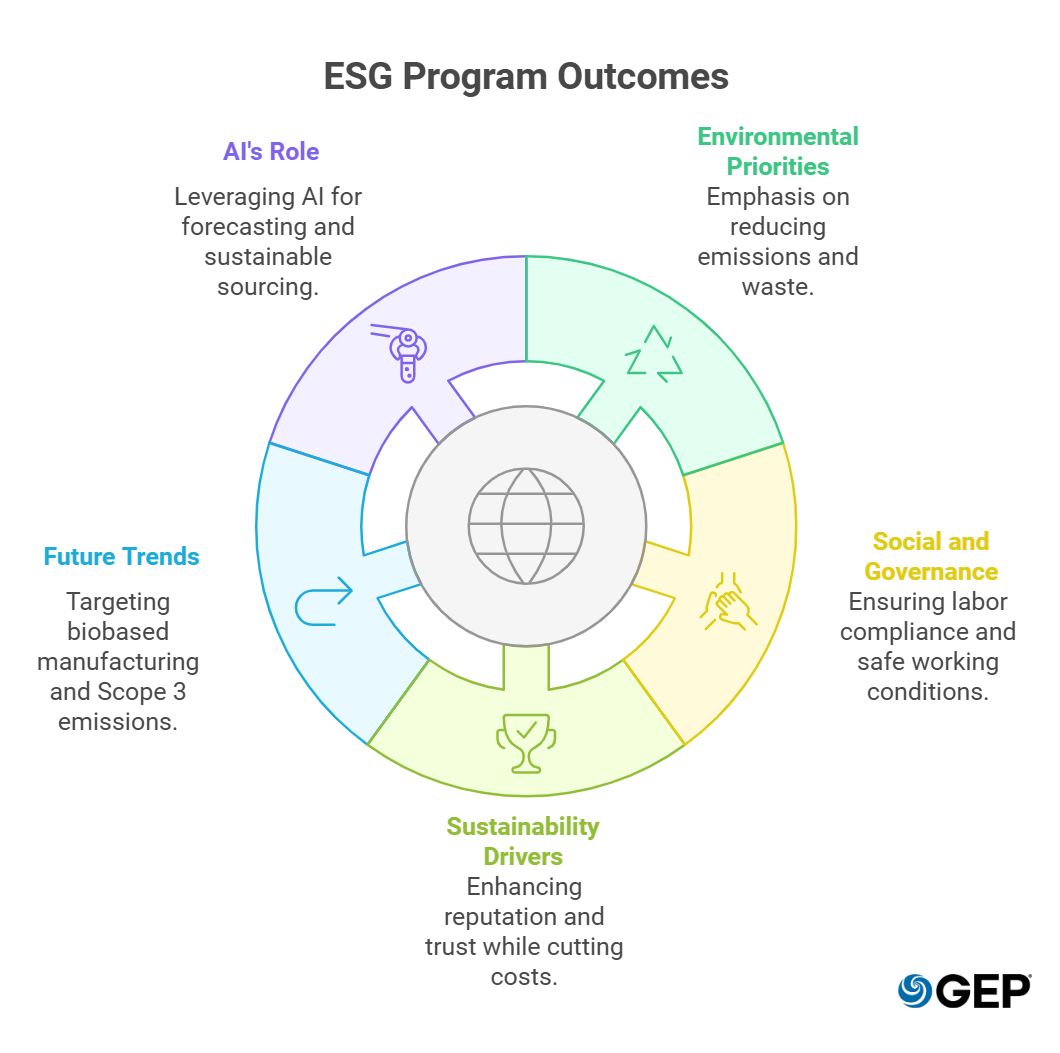
Supply Chain Leaders Are Prioritizing These Sustainability Strategies
- Businesses are focusing on carbon reduction, plastic management, water conservation and ethical labor practices, according to two sustainability surveys.
- Motivated by brand reputation, cost efficiency and regulatory compliance, companies are adopting new technologies to meet ESG goals.
- AI, including generative AI, is seen as crucial to improving demand forecasting and supply chain optimization to reduce emissions and ensure compliance.
November 16, 2024 | Sustainability
High interest rates, persistent inflation, supply chain disruptions and labor shortages are pressing companies to rethink their sustainability strategies.
They are finding new ways to balance environmental, social and governance (ESG) objectives with cost management and risk mitigation and using latest technology to achieve their sustainability goals, show two surveys of top procurement and supply chain executives.
This blog looks at supply chain sustainability priorities, their key drivers, planned actions for the future, and the role of technology in achieving sustainable supply chains based on the findings in The State of Supply Chain Sustainability report and Next-Gen Supply Chains: The Transformative Role of Supply-Chain Leaders in Today’s Business.
Key Supply Chain Sustainability Priorities
Focusing on the Environment:
Businesses are increasingly emphasizing on carbon emissions reduction, particularly those produced by company operations (Scope 1 and Scope 2). These efforts include decreasing greenhouse gases and enhancing energy efficiency. Furthermore, they are targeting areas that generate significant amounts of plastic. Many organizations are trying to change the design of the goods and the creating processes that are more sustainable. They are also looking at reducing waste and water consumption in the supply chain.
Social and Governance Aspects:
Businesses are now eliminating unauthorized subcontracting. Ensuring that all parts of the supply chain are compliant with company standards, particularly regarding labor practices, is crucial. Companies are intensifying efforts to eradicate these practices from their supply chains by addressing child labor and forced labor. Moreover, they are ensuring safe working environments for all by providing safe and healthy working conditions. This is a significant concern, especially in regions with less stringent labor laws.
Drivers of Supply Chain Sustainability
Responsible Business Practices:
Sustainability initiatives are seen as essential to maintaining a company's reputation and customer trust. This is because companies recognize that ethical operations are not just a regulatory requirement but also an important component of long-term success.
Brand Reputation and Trust:
The efforts towards branding enhancement are seen as directly related to the work practices of the company. More customers and organizations support the operations of organizations that follow ESG principles.
Operational Improvements and Cost Reductions:
Supply chain leader agree that sustainability can lead to greater efficiency and lower costs. By optimizing processes, they can reduce energy usage and waste.
Key Trends for the Future
Looking ahead, companies are planning several key actions to enhance their sustainability initiatives.
Cutting Scope 1 & 2 Emissions:
This is a top priority for most procurement and supply chain executives. Understanding scope 1 and 2 emissions will help them assess and measure scope 3 emissions too, coming from the broader supply chain.
Reducing Plastic Usage:
Lowering plastic generation and usage in the supply chain and shifting to biobased manufacturing are also key focus areas for companies. Plastic reduction is also often related to redesigning products to enable the use of more renewable materials, which also shows up as an increase in biobased manufacturing products.
Lowering Waste Generation:
This is also a priority for supply chain leaders. Waste reduction involves redesigning processes to improve quality.
Also Read: The Key Sustainability Issues in Supply Chain Management
The Role of AI in Supply Chain Sustainability
Companies are relying on the latest advances in artificial intelligence (AI), including generative AI, to help reach their sustainability goals. This includes implementation of software applications for monitoring, decreasing and preventing adverse effects on the environment as well as the creation of excellence centers for sustainability practices.
The top software and hardware combinations used by organizations to support ESG decisions include demand forecasting, supply chain optimization, blockchain , transport management system and business spend management.
AI is also helping address environmental-related concerns, for instance, Scope 1,2, and 3 emissions. This aids organizations in defining and refining their carbon accounting and reducing emissions valves.
Companies also increasingly looking towards using Gen AI’s toward their sustainability goals.
Generative AI is expected to help managers identify sustainable sourcing opportunities and uncovering inefficiencies in resource usage. This technology is also valuable for monitoring and reducing Scope 3 emissions.
The Way Forward
Sustainability concerns are top of the mind for companies driven by the need for responsible business practices, brand reputation and cost reduction. Their approach sustainability includes recycling, reducing carbon emissions, plastic and waste reduction, besides tackling child and forced labor and ensuring safe working environments in the supply chain. And they are leveraging the latest AI-powered solutions and establishing center of excellence as strategies to strengthen their sustainability efforts.




